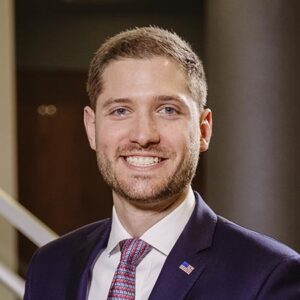Products “Made in America” are all around us. A lot of Americans think we no longer “make anything” in this country. Next time you hear someone make that claim, tell them that if the U.S. manufacturing sector were its own country, its $1.7 trillion worth of annual value-added would make it the ninth-largest economy in the world—bigger than the entire economies of countries such as India, Canada, Mexico, and South Korea.
Manufacturing supports millions of other jobs in the United States. More than 1 in 7 U.S. private sector jobs depend on manufacturing. In all, the factory sector supports almost 18 million jobs here, including nearly 12 million directly within manufacturing and roughly 6 million jobs indirectly in sectors such as professional services, wholesaling, transportation, and agriculture. (Some studies suggest that high-tech manufacturing supports many more non-manufacturing jobs!)
Manufacturing drives innovation. Manufacturers account for 70 percent of all private sector R&D in this country. American innovation is driven by manufacturers as “spillover” effects from their R&D investments help spread new ideas from industry to industry and sector to sector across the economy.
Manufacturing generates more economic activity than any other sector. Every dollar of final sales in manufacturing generates $1.34 in economic activity throughout the rest of the economy, giving manufacturers a higher multiplier effect than any other sector.
Manufacturing drives productivity growth. Increased productivity leads to higher living standards, and U.S. manufacturers are leaders in this area. Because manufacturers are the most intensive users of capital equipment and technology, their productivity consistently outpaces the growth in other sectors. In the past decade, manufacturing productivity grew at an average annual rate of 3.5 percent, more than twice the rate of service sector productivity.
Manufacturing has the lion’s share of exports. U.S. manufacturers exported $123 billion in goods per month last year to 238 different countries. Manufactured products represent almost half of all American exports, helping bridge the country’s significant trade gap.
The age gap between the industrial and non-industrial workforces is widening. The manufacturing sector is experiencing disproportionate ramifications of an aging American workforce. Today the median age in manufacturing is 44.1 years versus 42.1 years for the total non-farm workforce, and the gap continues to spread. Policymakers and manufacturers need to team up on a strategy to attract today’s youth to the modern world of sophisticated manufacturing.
Source: Manufacturers Alliance for Productivity and Innovation

Episode 52: Wisconsin’s Manufacturing & Agriculture Tax Credit
https://www.youtube.com/watch?v=-enjM36-GAk WMC, in partnership with Inland Packaging in La Crosse, released a new video highlighting how Wisconsin manufacturers have contributed to the state’s economy due




